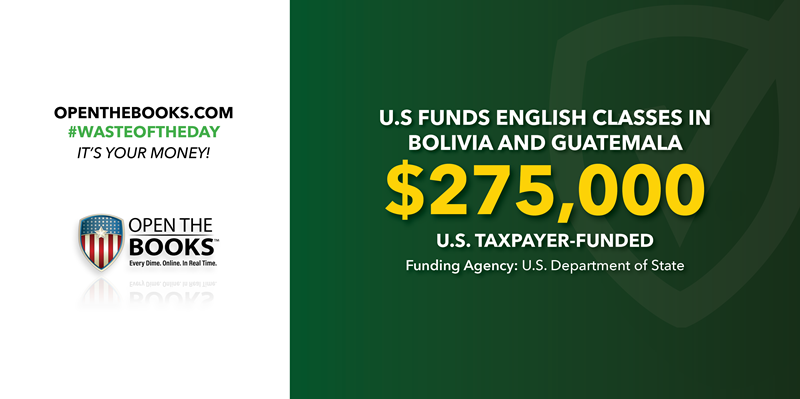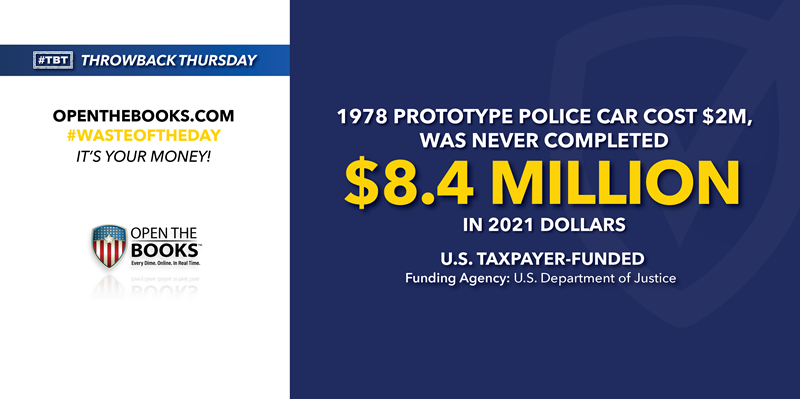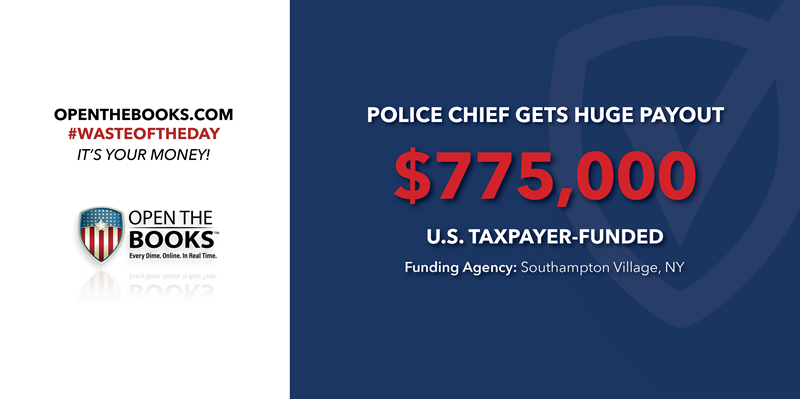
The $100 Million Taxpayer Subsidy of California’s Pot Industry | August 30, 2021

When California legalized recreational marijuana in 2016, advocates cheered the progressive policy as a win for civil rights and as a money-maker for the state.
But bureaucrats created so much red tape that businesses in the industry can’t afford to keep up with the expensive regulations without the state's help.
Now California is bailing out the marijuana industry from the regulations it created.
Growers and sellers are getting $100 million to convert their provisional licenses to permanent ones, as required by the state.
About 82% of marijuana companies have provisional licenses and can’t afford what it takes to convert to permanent ones, Fortune reported. They cite high taxes on legalized marijuana, as well as the difficulty meeting environmental regulations.
One cannabis expert estimated it costs $250,000 to open a regulated dispensary, according to Bloomberg.
And with the expense of licensing has come an explosion of completely unlicensed — illegal — dealers. A recent estimate has the number of illegal dealers tripling that of licensed ones, Fortune reported.
Municipalities will get the $100 million in state funding and divvy it up among the marijuana sellers. Los Angeles will get about $22 million in funds to hand out.
The Institute on Taxation and Economic Policy estimates California raised $1 billion in taxes from marijuana sales in 2020.
But the Golden State is taking two steps forward and one step back by having such burdensome regulations that it must bail out the industry.
Some American Students Can Only Spell F-a-i-l-u-r-e | August 31, 2021

The U.S. Department of State is giving $275,000 in grants to organizations in Bolivia and Guatemala to teach people English.
The United States has a vested interest in having more people around the world speak English and the $100,000 for Bolivia and $175,000 for Guatemala isn’t exorbitant. However, many students in America can’t pass remedial reading tests.
The national average for fourth graders in public schools in 2019 is having 65% of students reading at or above basic levels and 34% at or above proficient.
Not exactly a high bar, students in 28 states test above the national average.
That includes in New York, Wisconsin, and Rhode Island, where 66% of students read at or above basic levels and in Kentucky, Maine, North Carolina and Indiana, where 67% of students read at or above basic levels.
The lowest levels of basic reading skills are seen in Alaska and New Mexico (53%), Louisiana (55%), Washington D.C. (57%), Alabama (58%), West Virginia (60%), and Texas, South Carolina, and Arizona (61%).
No state tops 45% of fourth graders reading at or above proficient.
Alaska, New Mexico, Louisiana and Alabama all have below 30% of their fourth graders reading at proficient levels.
Eighth graders fared better, with the national average being 72% of eight-grade students reading at or above basic levels. The national average for proficient dropped to 32%.
While 32 states have eight-grade students reading above the national “basic” average, only one state, Massachusetts, enters the 80 range (81%). Again, no states exceed 45% of students reading at proficient levels.
It should be an embarrassment that American children are struggling in reading.
U.S. Labor Department Pumps $10 Million into Central and South American Countries for Gender/Racial Equity and Fishing Programs | September 1, 2021
The United States has a myriad of labor and employment issues, but the Department of Labor’s Bureau of International Labor Affairs focuses on labor around the world.
Who knew that our domestic Labor Department also functioned as a foreign aid vehicle?
The Bureau of International Labor Affairs has a $96 million budget in 2021, and “promotes a fair global playing field for workers and businesses in the United States and around the world by enforcing trade commitments, strengthening labor standards, and combating international child labor, forced labor and human trafficking.”
Two of its larger recent grants were $5 million for improving respect for workers’ rights in agricultural supply chains in Honduras, Guatemala and El Salvador, focusing on gender and racial equity and another $5 million for strengthening decent work in the fishing sector in South America.
The gender and racial equity grant will “address the systemic violation of internationally-recognized workers’ rights in the export-oriented agricultural sector in Honduras and Guatemala and the maquila sector in El Salvador,” according to the grant summary.
For the fishing sector grant, the objective is to “strengthen mechanisms to address labor violations associated with illegal, unreported, and unregulated fishing,” among other things, the grant summary states.
No decent human is in favor of child labor, forced labor or human trafficking but $10 million is a huge sum to spend on labor in other countries.
In 1978, the Feds Spent $8.4 Million on a Never-Completed Police Car | September 2, 2021

Throwback Thursday!
In 1978, the feds spent $2 million on developing a prototype police patrol car – equal to $8.4 million in 2021 dollars. However, they never completed the project.
The U.S. federal agency, Law Enforcement Assistance Administration – part of the U.S. Department of Justice – earned a Golden Fleece Award by U.S. Senator William Proxmire (D-Wis.) to highlight the folly of spending such an outrageous sum on a prototype that was never completed.
If completed, the car was to be filled with gadgets and would have cost $49,078 each — $205,497 in 2021 dollars!
Let’s look at the police cars used in New York City, the largest and one of the oldest police departments in the country.
Patrol cars can be Chevrolet Impalas, costing as much as $31,620; Chevrolet Volt (discontinued in 2019) which was as high as $38,995; Dodge Charger as high as $30,755; Ford Crown Victoria (discontinued in 2012) was as high as $29,905; Ford Fusion Hybrid as high as $28,000; Ford Police Interceptor Sedan (discontinued in 2019) was as high as $28,360; Nissan Altima as much as $34,250 and Toyota Prius as much as $32,650.
The patrol cars that would have come from the prototype would have cost more than five times as much as the most expensive patrol car used by the NYPD in 2021.
Sen. Proxmire gave Golden Fleece awards to wasteful and nonsensical spending, handing out 168 awards between 1975 and 1988.
Proxmire was right to turn on the flashing lights and sirens on this taxpayer boondoggle.
On Long Island, Police Chief Gets Payout More Than Three Times His Salary
| September 3, 2021

The police chief in Southampton Village, part of Long Island’s most exclusive and expensive places to live, will get an almost $775,000 payout as he retires this month.
The payout is one of the largest ever paid to a Long Island official, according to Newsday.
The large sum for unused sick, vacation and other time includes 686 unused days at a rate of $1,095 per day and almost $23,000 in retroactive per diem pay.
The police chief, Thomas Cummings, has worked for the police department in Southampton Village, part of one of New York’s upscale and overpriced communities referred to as The Hamptons, since 1987, Newsday reported. He has been chief since 2011.
He will get premium-free medical and dental benefits for him and his family for the rest of his life and his wife can continue to collect some of the benefits after his death until she dies or remarries, the newspaper reported. The funds come from an employee benefit reserve fund that has about $1.1 million in it.
In 2020, Cummings’ salary was $248,342 — higher than that of NYPD Commissioner Dermot Shea at $243,171. Four-star generals in the U.S. military receive approximately $278,000 per year.
Southampton Village’s year-round population is around 3,200 and balloons in the summer with vacationers visiting their summer homes, while New York City’s population is just under 8.5 million.
Southampton Village Mayor Jesse Warren criticized the lucrative package, pointing out it was one of several awarded by previous administrations that raised the village’s long-term debt to $115 million.
Paying $775,000 to a single person for a government job is certainly one way to raise a small village’s debt.
The #WasteOfTheDay is presented by the forensic auditors at OpenTheBooks.com.